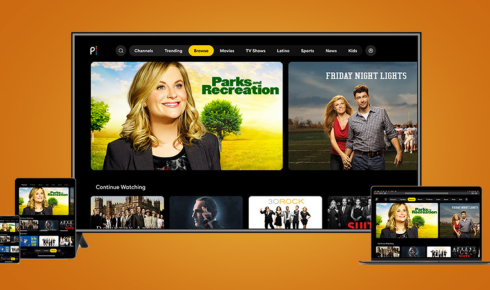
Advertising Revenue as a Key Business Model for Peacock TV
Peacock TV, NBCUniversal’s streaming service, has adopted a hybrid monetization strategy that includes both subscription-based and advertising-supported models. While it offers premium tiers (Peacock Premium and Peacock Premium Plus), advertising revenue remains a crucial component of its business model. This paper explores how Peacock TV leverages advertising revenue, the advantages and challenges of this approach, and its impact on the competitive streaming landscape.
1. The Role of Advertising in Peacock TV’s Business Model
Peacock TV operates on a freemium model, where users can access a limited content library for free with ads, while premium tiers offer more content with reduced or no advertisements. Advertising revenue is generated through:
1.1 Ad-Supported Free Tier
- Peacock’s free tier attracts a broad audience by offering movies, TV shows, news, and sports with mandatory ad breaks.
- Advertisers pay to reach these viewers, making the free tier a significant revenue stream.
1.2 Ad-Supported Premium Tier
- Even the paid Peacock Premium ($5.99/month) includes ads, though fewer than the free version.
- This dual approach ensures continuous ad revenue while still incentivizing subscriptions.
1.3 Ad Formats and Pricing
Peacock employs various ad formats, including:
- Pre-roll and mid-roll video ads (similar to traditional TV).
- Interactive and shoppable ads (allowing direct purchases).
- Branded content and sponsorships (integrated into shows).
- Targeted advertising (using viewer data for personalized ads).
Ad rates vary based on factors like audience demographics, content type, and demand.
You May Also Like- Peacock : Start Streaming Today with This Simple Login Guide Visit : Peacocktv.com/tv
2. Advantages of Advertising Revenue for Peacock TV
2.1 Diversified Revenue Streams
Unlike purely subscription-based platforms (e.g., Netflix), Peacock benefits from dual income sources:
- Subscription fees from premium users.
- Ad revenue from both free and premium users.
This reduces reliance on subscriber growth alone.
2.2 Lower Barrier to Entry for Users
- The free tier attracts users who may not want to pay for streaming.
- Ad-supported tiers make premium content more accessible, increasing user engagement.
2.3 Higher Monetization Potential
- Advertisers pay CPM (Cost Per Mille) rates, which can be lucrative with high viewership.
- Peacock’s access to NBCUniversal’s ad sales network (including Comcast’s data) enhances targeting capabilities.
2.4 Competitive Differentiation
While competitors like Netflix and Disney+ resist ads, Peacock’s ad-supported model provides a unique selling point, especially for cost-conscious consumers.
3. Challenges of Advertising Revenue for Peacock TV
3.1 Ad Fatigue and User Experience
- Excessive ads can frustrate users, leading to churn.
- Balancing ad load while keeping engagement high is critical.
3.2 Competition for Ad Dollars
- Peacock competes with YouTube, Hulu, and social media platforms for digital ad budgets.
- Advertisers prioritize platforms with higher engagement and precise targeting.
You May Also Like- Peacock : Start Streaming Today with This Simple Login Guide Visit : Peacocktv.com/tv
3.3 Data Privacy and Regulation
- Stricter privacy laws (e.g., GDPR, CCPA) limit data collection for ad targeting.
- Peacock must ensure compliance while maintaining ad effectiveness.
4. Strategies to Maximize Advertising Revenue
4.1 Advanced Ad Targeting
- Leveraging NBCUniversal’s first-party data (from Comcast, Sky, and NBC) to improve ad relevance.
- Using AI-driven analytics to predict viewer preferences.
4.2 Exclusive and Live Content
- Live sports (Premier League, WWE) and news attract high-value advertisers.
- Original Peacock exclusives (e.g., The Office, Brave New World) increase ad demand.
4.3 Hybrid Monetization Flexibility
- Offering ad-free upgrades (Peacock Premium Plus) while maintaining ad-supported options ensures revenue from both models.
4.4 Partnerships and Sponsorships
- Collaborating with brands for integrated ads (e.g., product placements in shows).
- Custom ad experiences (e.g., pause ads, interactive ads).
5. The Future of Advertising on Peacock TV
- Growth in CTV (Connected TV) Advertising: As more viewers shift from linear TV to streaming, Peacock can capture higher ad spend.
- Ad-Supported Tier Expansion: Peacock may introduce more ad-supported content to attract budget-conscious users.
- Innovative Ad Tech: Experimenting with addressable ads (different ads for different households) and programmatic ad buying.
You May Also Like- Usa Network : Start Streaming Today with This Simple Login Guide Visit : Usanetwork.com/activatenbcu
Conclusion
Advertising revenue is a cornerstone of Peacock TV’s business model, providing a sustainable alternative to pure subscription-based streaming. By balancing free and premium ad-supported tiers, leveraging NBCUniversal’s content and data, and innovating in ad tech, Peacock ensures steady revenue growth. However, challenges like ad fatigue and competition require continuous optimization. As the streaming wars intensify, Peacock’s hybrid approach positions it as a strong contender in the ad-supported OTT market.
